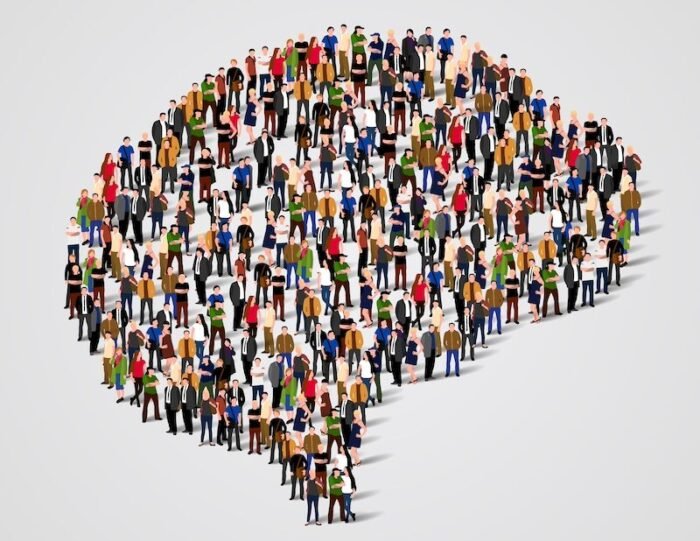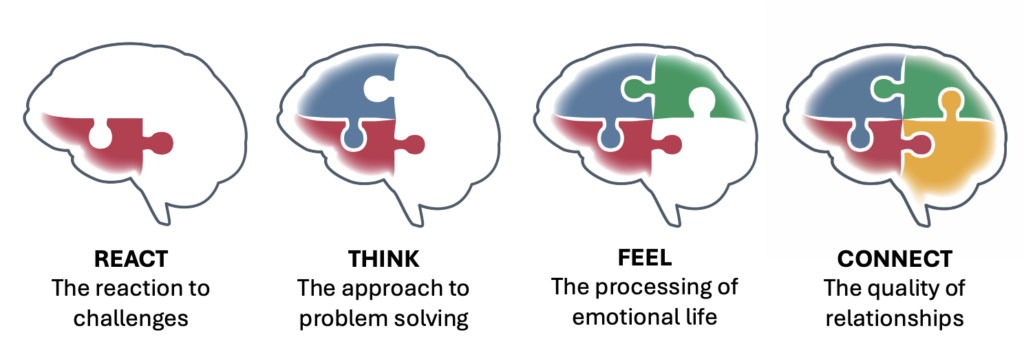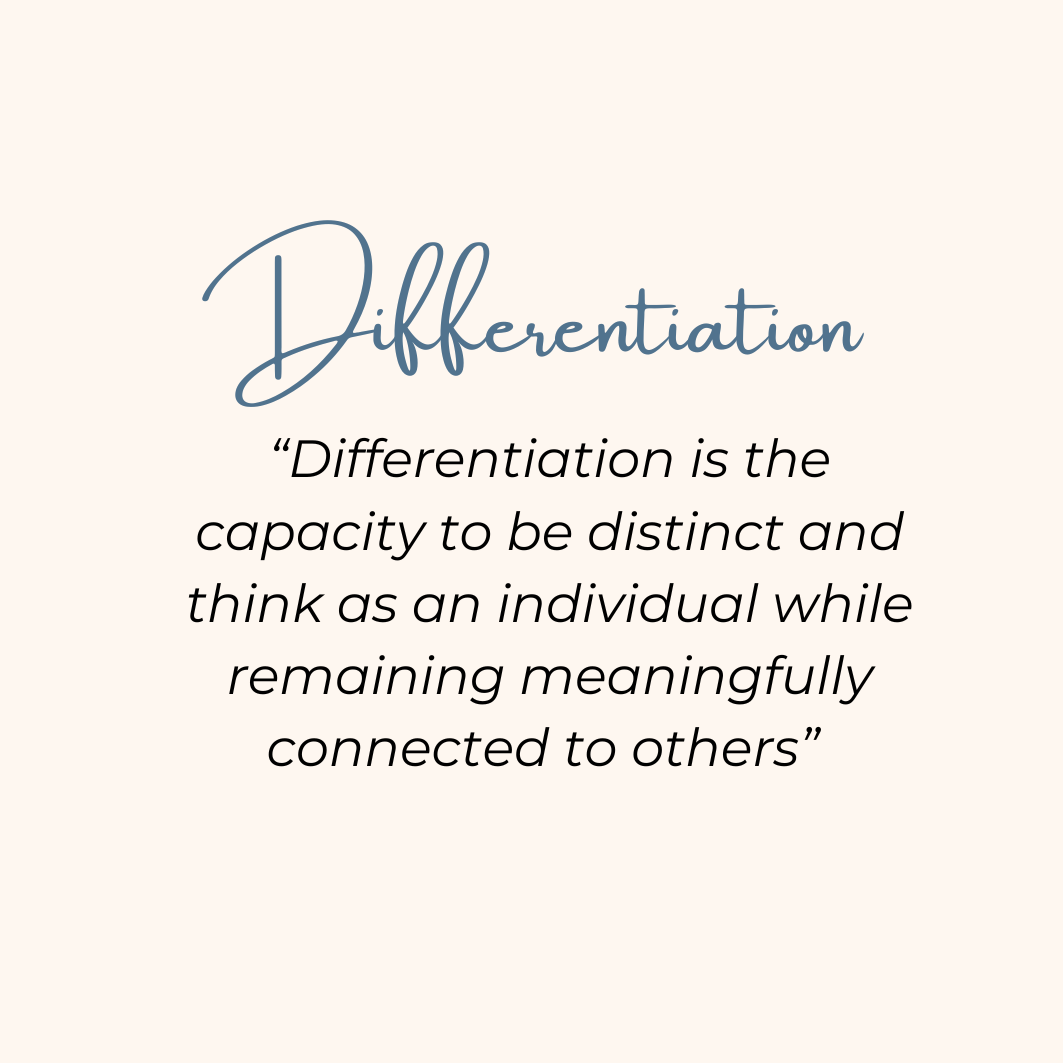
Part 2 of the series: Meet the Team Brain. Click here to read part 1.
When we are born our brains have a full cohort of nerve cells but minimal connections between them. Over the first 3 years of life we develop over 1 quadrillion connections (that’s one followed by 12 zeros!) These links are created by the experiences we have and this short period in our early years impacts how we perceive the world for the rest of our lives. In the same way, the team brain’s early years are formative and set the scene for the ongoing functioning of the group in the years and generations that follow.
The founders of every group form the heart of the team brain’s personality. Bill Gates shaped the team brain of Microsoft and Mark Zuckerberg’s personality is all over Facebook and Meta. In family life, the team brain of our nuclear family (the family who all live in one house together) starts to set in place once all children are born (although we also have a broader family team brain which extends back across generations).
While company’s love to advertise their empowering culture, strong values or inclusive DEI policies, what people do is far more important that what people say that they do, and we understand the team’s team brain by observing and experiencing the life of the group. We particularly notice the personality of the team brain in the way it thinks, feels, connects and reacts. How people problem solve together, how they address (or ignore) emotions, how relationships are nurtured and encouraged and how stress is reacted to.

There is a saying in neuroscience that “neurons that fire together, wire together”, it describes the process by which the more two neurons communicate or are activated at the same time, the stronger and faster their connection becomes. The same occurs in our team brain. In our groups we repeat particular types of behaviours with each other, and over time these interactions become patterned, habitual and automatic.
The clearest examples of this are seen within our family. You might always try to calm the tension between your parents, your eldest brother might automatically make decisions for the rest of the siblings, and your youngest sister always needs helping out and saving. These relational dynamics become so engrained that we don’t even notice our behaviours, they become who we are and we replicate them in our other relationships and at work.
As the structure of the team brain becomes established it starts to take on a life of its own. At the beginning of a startup things are flexible, but it doesn’t take long for the “way things are done around here” to become fixed and rigid. Just as the cells in our body are replaced regularly but our body remains the same form, so it is with the Team Brain. Patterned behaviours are no longer restricted to the particular individuals within a work team, instead you can change the individual enacting the role, but the next person who arrives will start to embody the same characteristics.
Bill Gates can quit Microsoft and Mark Z leave Meta, but the culture and ways of thinking and acting will remain the same. As you map out the the generations, both family and organisational, you can observe repeating patterns of behaviour down the generations. Once a Team Brain has become stable in this way it resists change. This homeostasis explains why it is so hard to transform a toxic culture. You can change the leadership but without addressing the shape of the Team Brain, the same insidious issues will re-emerge.

Our brain has two core organising principles: stability and survival. Stability is all about keeping our everyday internal bodily functions coordinated and in balance. The other principle, survival focuses on enabling us to react effectively to changes in the external environment, specifically threats, this is our fight or flight system. The autonomic nervous system directs both activities, with the parasympathetic branch coordinating stability efforts and the sympathetic branch responsible for survival activity.
The same two principles underly the organisation of the team brain. Social stability focuses on creating consistent, stable, supportive and reliable relationships that work together for a shared purpose. In contrast, social survival entails the effective communication of detected threat between individuals, so that everyone escapes danger, not just the one who sees it.
In both our brains, survival trumps stability. We might have team away days to crate a positive team culture, but if you don't also address the automatic stress behaviours of the team (our social nervous system), then under pressure all best practice will be sabotaged and scuppered.

Optimal functioning within our brain comes from a balance of specialisation and interconnection. Distinct brain regions specialise in particular tasks and develop strong interconnections to connect the different regions. For example, visual information is processed in the specialised occipital lobe and its high levels of linkage with areas such as the temporal lobe and prefrontal cortex help us to identify what we have seen and what we might do next. This balance of differentiation and linkage allows our brain to perform at its best, our mental health thrives and we are highly stress resilient.
A thriving team brain also has this integration of differentiation and linkage. This balance is rooted in the relational forces of individuality and togetherness that we described earlier. A team brain that encourages its members in their individual diversity while also creating strong bonds of connection is one that thrives. It performs highly, solves problems creatively, bounces back after threat and pressure and doesn’t get stuck in chronic anxiety.
Within neurobiology the term integration is used to describe this optimal organisational of specialisation and connection. In contrast Murray Bowen, founder of Bowen Systems theory , uses the term differentiation to capture the balancing act in human interactions. Bowen theory (which forms the foundation of the Dr Kissell’s work) defines differentiation as the ability to be distinct and think as an individual while remaining meaningfully connected to others. We have chosen to use Bowen’s definition of the term differentiation and thus we describe a team brain that both embraces its members uniqueness while creating strong bonds within the group as highly differentiated.

The Challenge of a Stressed Team Brain
When we are given the luxury of starting a team from scratch, whether business entrepreneur or community project pioneer, then we can be deliberate about how we build our team brain. We can clearly articulate and ensure we embody the personality and values we wish to establish. We can share the core areas of team brain life, how the group thinks, feels, connects and reacts under pressure. We can foster high team differentiation (or as we call it, high Team DQ®).
But most of us join pre-formed teams. We are born into a family whose team brain goes back hundreds of generations, we replace a team member in a well-established work team, we join historical clubs, societies and institutions.
In these instances, not only is the level of team DQ already established, but another factor has come into play that significantly impacts the functioning of the team brain. This is the level of pressure and tension the team is experiencing.
Stress has such a dramatic impact on the capacity of the team brain that even the most highly differentiated teams can become burnt out and broken. The toxic combination of low team DQ and high stress is one of the most common reasons for team implosion, whether that is family breakdown or business collapse.
Sign up here if you would like to know when the next blog in this series arrives. You will also receive monthly newsletter with how-to guides to support you as you begin to think about the impact of the team brain on your relationships.
Bowen Theory Footnote
For those readers familiar with Bowen systems theory, you will recognise the overlap between the concept of the team brain and Bowen’s articulation of the emotional system. I have chosen to avoid the term emotional system because Bowen’s definition of ‘emotional’ is distinct from the everyday use of the word and creates misunderstandings. DrKK